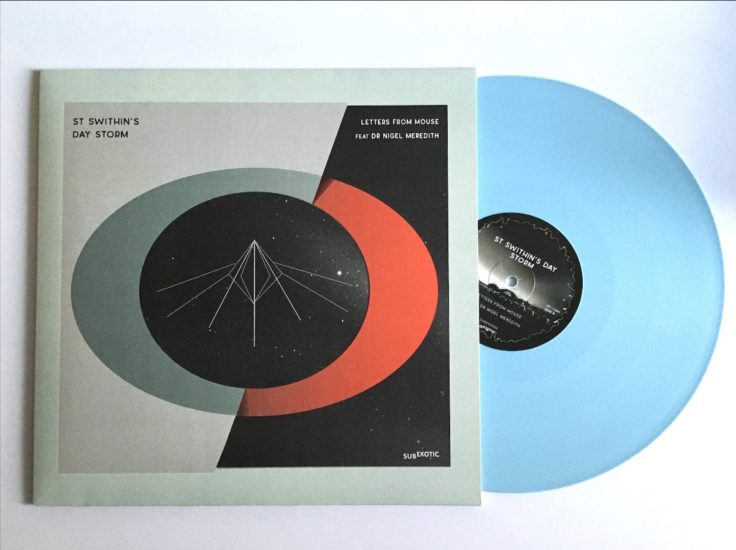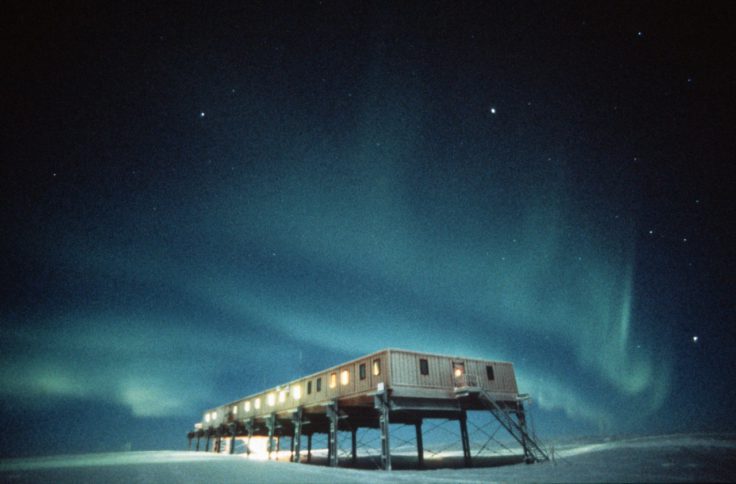Geomagnetic storm sounds inspire new album
A new album inspired by the sounds of radio waves produced by a geomagnetic storm has been released. St Swithin’s Day Storm is a collaboration with Steven Anderson, known as Letters from Mouse, who uses modular synths and hardware to create sonic stories based on place-centred audio source material.
Dr Nigel Meredith, a BAS space weather research scientist, has been working with musicians and artists since 2018 to incorporate recordings from Halley into compositions as part of a data-as-art outreach project called Sounds Of Space. For his collaboration with Letters From Mouse, he used a sequence of space weather recordings from a geomagnetic storm centred on St. Swithin’s Day in 2012.

Our planet naturally produces a wide variety of radio waves which we detect using a very low frequency receiver at the Halley VI Research Station. At BAS, we use these waves to investigate the science of space weather storms, to help understand potential space weather impacts on the climate system, and for lightning detection. As an amazing spin-off we also convert them to audio files revealing some pretty weird and mysterious ‘sounds’ which Dr Meredith has used in a number of collaborations.

Speaking about the science behind this phenomena, Dr Meredith explained:
“Space weather events are natural phenomena, driven by the Sun, that can affect technological systems in space and on the ground. The Sun is an active star, with frequent explosions on its surface, sending bursts of charged particles and magnetic fields out into space. If they’re directed towards Earth, when they reach us, they can tear open the Earth’s magnetic field, giving rise to a geomagnetic storm. Such storms are accompanied by many effects in near-Earth space, including beautiful aurora displays and the generation of natural radio waves known as chorus emissions – so called, because when played back as audio, they often resemble the twittering of birds in the dawn chorus. They also have the power to disrupt our technological systems, including satellites, communications, aviation and power grids.”
The album progresses through the phases of the storm – initial, main and recovery – using the distinctive space weather sounds that the Halley receiver detects: spherics, which appear as crackles and pops; whistlers, descending tones caused by lightning strikes; chorus, which evokes birdsong.
Steven Anderson reflected on how the raw sounds were used in the album:
“I really wanted to harness the science behind this. I wanted to get the sounds front and centre and really feature them. They’re in an unadulterated, raw form, but also heavily doctored. A lot of them have been run as samples into the modular system, and mangled in weird and wonderful ways.”
The music is accompanied by a voiceover by Dr Meredith explaining the space ‘sounds’, and, more generally, space weather and its potential impacts on the performance of technology in orbit and on Earth. The storm itself, which peaked on St Swithin’s Day (15thJuly) in 2012, was accompanied by some sustained and enhanced chorus emissions and the gradual acceleration of electrons to relativistic energies at geostationary orbit, potentially increasing the risk to communications satellites operating in this region
St Swithin’s Day Storm is released today, 24th February, via digital platforms and limited edition pressed vinyl.
_________________________________
Music written, performed & produced by Steven Anderson (Letters From Mouse)
VLF signals recorded by the Halley VLF receiver (British Antarctic Survey)
Voiceover by Dr Nigel Meredith (British Antarctic Survey)
Mastering by Antony Ryan (Redredpaw)
Design by Dan Seville (Subexotic)
Vinyl record centre label adapted from original photograph ‘Sunset over the British Antarctic Survey’s Halley VI Research Station on the Brunt Ice Shelf Antarctica’ by Tom Welsh.